|
|
|

BGC > Region
Chemical industry worldwide
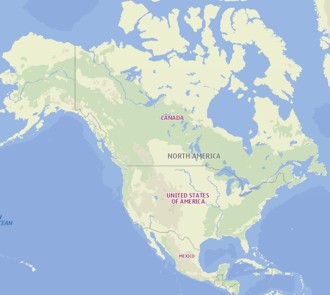 |
North America
Canada
Mexico
Canada
USA
The North and the Middle of America is one of the leading continent in producing and processing chemicals.
The chemical industry is heavily involved in the strong industrialization of the early to mid 19th century.
More than 1910 companies are located in North of America, either as
a production site or as a trading house. Every known chemical company worldwide is
represented in the states of the USA, Canada and Mexico. Important sites for the chemical industry are the states of New Jersey, California, New York, Pennsylvania, Illinois, Ohio, Texas ....
|
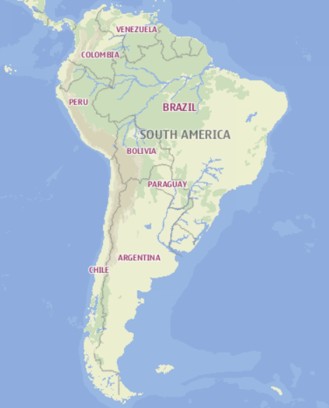 |
South America
Argentina
Bolivia
Brazil
Canada L4G 6X7
Chile
Colombia
Costa Rica
Guatemala
Honduras
Paraguay
Peru
Uruguay
Venezuela
P.R.China
U.A.E.
Twelve economically independent countries together make up the 4 largest continent, South America.
In the past 20 years, among the chemical industry the economy in the largest countries in South America developed significantly.
The main economic development take place in Venezuela, Colombia, Argentina, Uruguay and Peru. The populous and largest country, Brazil has pent-up demand.
To power and support the sustainable collaboration between the Pan-American countries in the field of Chemical Engineering
CEPAC (Chemical Engineering Pan-American Collaboration) has been created.
The chemical industry of the South American country is currently represented by 158 companies in our
service, but will grow accordingly due to the construction oriented economic development.
|
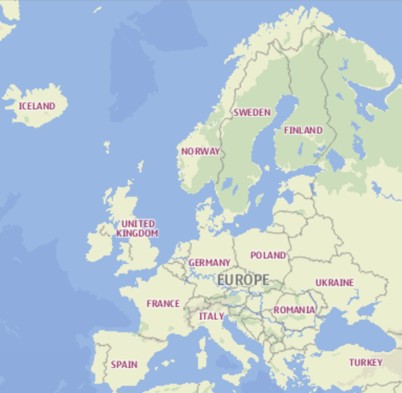 |
Europe
Belgium
France
The Netherlands
France
Germany
Madagaskar
Germany
Ireland
Scotland
Spain
U.K.
United Kingdom
Italy
Albania
Andorra
Austria
Belarus
Bulgaria
Croatia
Cyprus
Czech Republic
Denmark
Estonia
Finland
Germany
Greece
Hungary
Iceland
Ireland
Italia
Italy
Latvia
Lithuania
Macedonia
Malta
Norway
Poland
Portugal
Romania
Russia
Serbia
Slovakia
Slovenia
Spain
Sweden
Switzerland
The Netherlands
Türkiye
Ukraine
Europe is the second-smallest continent of the world by surface area and has approximately 50 states, the largest is Russia by both area and population.
The economy of Europe comprises more than 731 million people.
Europe has a thriving manufacturing sector, with a large part of the world's industrial production taking place in Europe.
Most of the European industries, including Manufacture of chemical products (1997 are listed), are concentrated in Germany, France, The Netherlands, Belgium, Switzerland, Italy and the United Kingdom.
Because of the higher production costs and because of high and rising environmental concerns associated with high investment costs Europe is suffering from deindustrialization and
off shoring in the labour intensive manufacturing sectors.
This means that manufacturing has become less important and that jobs are moved to cheaper regions (mainly China and Central and Eastern Europe).
|
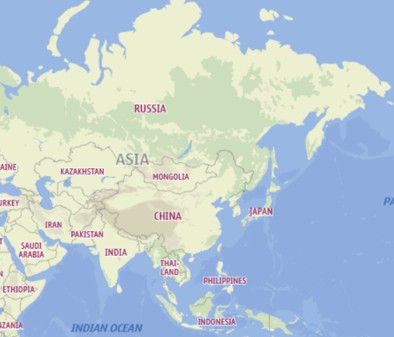 |
Asia
Hong Kong
P.R.China
Paraguay
Taiwan
India
Japan
Armenia
Bahrain
Bangladesh
Hong Kong
India
Indonesia
Iran
Iraq
Israel
Jordan
Kazakhstan
Korea
Korea, South
Kuwait
Lebanon
Malaysia
Mauritius
Nepal
New Zealand
North Korea
P.R.China
Pakistan
Philippines
Qatar
Russia
Saudi Arabia
Singapore
South Korea
Sri Lanka
Syria
Taiwan
Tehran
Thailand
Turkmenistan
Türkiye
U.A.E.
Uganda
Ukraine
United Arab Emirates
Vietnam
Asia has about a third of the landmass of the earth and is therefore rich in many raw materials and rare earth end.
In Asia, there is the most developing countries beyond Africa. These include Vietnam, Cambodia, Bangladesh, Bhutan, Nepal, Pakistan, Afghanistan, Tajikistan, Georgia, Armenia, Azerbaijan, Yemen, Mongolia,the People's Republic of China and India.
In addition, include the heavily oil-producing countries Iran, Iraq, Kuwait, Saudi Arabia and United Arab Emirates.
As industrialized countries are Japan, Singapore, the Republic of China, South Korea and
Israel. These countries are among the world leaders in areas of high technology. Also, Malaysia is making successful efforts to catch up to the top.
Japan is Asia's largest economy and second largest worldwide. In Asia, followed by the countries of China, South Korea and India. Japan's economy for decades was the fastest growing economy in Asia.
During Japan's economic situation worsened since the 1990s, China and India have in the same period of above-average economic growth, including in the chemical industry. (1946 are published in our service.)
|
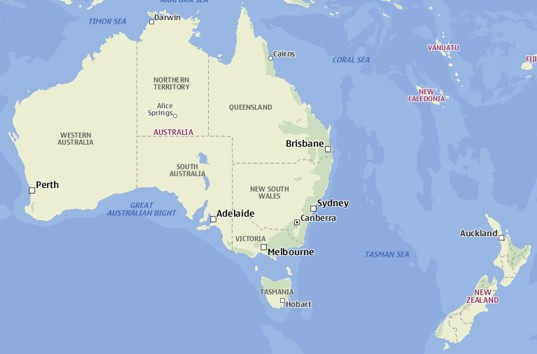 |
Australia
Australia
New Zealand
In particular for suppliers from abroad has much to offer the Australia market for chemical products. The import share has increased steadily, and Germany is one of the major suppliers. In line with the general economic growth may demand
rise by Industry products in the coming years. Environmentally friendly products are percentage considered particularly strong growth.
Australia remains an attractive market for chemicals and chemical products. Of likely Suppliers from abroad in the future particularly benefit because local production only able to cover part of the needs. In addition, major investments were in the sector
largely. In recent years, made constant economic growth for a rising Demand for industrial chemicals.
The Australian pharmaceutical industry is in the midst of an upheaval. In the coming years run out several patents for medicines. Thus, the consumption of generics should expansively develop. Australians include increased private health insurance from what is
positive effect on the demand. According to industry representatives, the market volume for pharmaceutical amounted Products in the 2010/11 marketing year to nearly $ 16 billion A From the increasing demand primarily benefit suppliers from abroad.
A proportion of two-thirds of domestic demand is currently served by imports - Trend ascending.
|
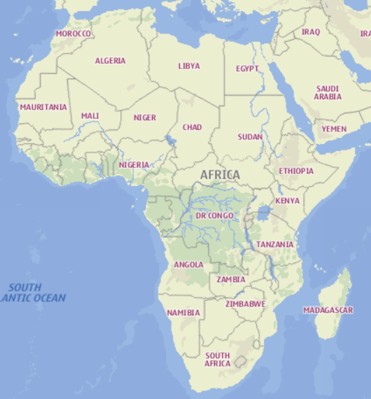 |
Africa
Egypt
Ghana
Kenya
Libya
Morocco
South Africa
Tunisia
U.A.E.
U.K.
Uganda
United Arab Emirates
Zimbabwe
The African chemical industry still plays on a global scale is currently a subordinate role. Only about 1% of world chemical production takes place on this continent.
South Africa is in a proportion of 35% by far the largest chemical producer in the region. There especially basic chemicals, paints and other specialty and consumer chemicals are produced.
At the Cape some global players have their headquarters, for example, Sasol.
About half of the African chemical production attributable to North Africa. In this case, significant differences in the product show.
For example, in Tunisia dominated the production of inorganic raw materials (phosphates and fertilizers). The division has a share of the total chemical production in the country of nearly 60%.
Egypt, however mainly produces pharmaceuticals ago (40%), while producing the Nile barely petrochemicals or polymers. Both divisions come together there only to a level of 7%.
The petrochemical production in North Africa is mainly in Libya.
Because of the rich natural resources of Africa produces chemical industry preferred raw materials. The proportion of basic chemicals is around 50%.
Besides fertilizers mainly petrochemical raw materials and standard polymers are produced. Demand for basic chemicals will grow worldwide vigorously until 2030th
Although these in particular the Middle East and the emerging Asian economies will benefit the African basic chemicals offer good growth opportunities.
Already, Africa is a net exporter of basic chemicals.
The African specialty chemicals, however, is highly fragmented and uncompetitive. Their share in the chemical production of the continent is only 14%.
The foreign trade statistics has a clear deficit in the balance of trade for the African chemical industry. The same is true for manufacturers of pharmaceuticals.
The African pharmaceutical production is not sufficient to satisfy the high domestic demand for drugs. Africa produces mostly generic drugs for the domestic market.
The proportion of the pharmaceutical division of the total production is 16%. Also in soaps, detergents and cleaners, the African demand is high.
But it can not be operated solely from domestic production. Despite high net imports, the division of consumer chemicals reached a share of total African production of 16%.
In an international comparison, the much. In Germany, for example, the share of consumption of chemicals in chemical production is just half as high.
Egypt: Egyptian impetus for the chemical industry are posed by the petrochemical industry
out. Chemical products are also essential goods in the Egyptian foreign trade. High import growth was recorded
2014 organic chemicals and pharmaceuticals.
Algeria: oil and gas companies with petrochemical plants. The government controls or regulates the crude oil processing.
Well-known companies are gas group Sonatrach, Qatar Petroleum and the Algerian
SOEs Minal et Asmidal.
In the pharmaceutical sector are still high investments for generic production to
expect. Announced major projects in Algeria delayed frequently or be canceled.
Angola: As a result of oil production large petrochemical plants have emerged in Angola.
In Soyo, Zaire province, are another large Refineries available.
With the started revival of agriculture and the demand for agrochemicals. For this reason, the fertilizer industry developed.
|
|
|
|
www.BuyersGuideChem.de
is visited by more than
75,000 readers
per month
|